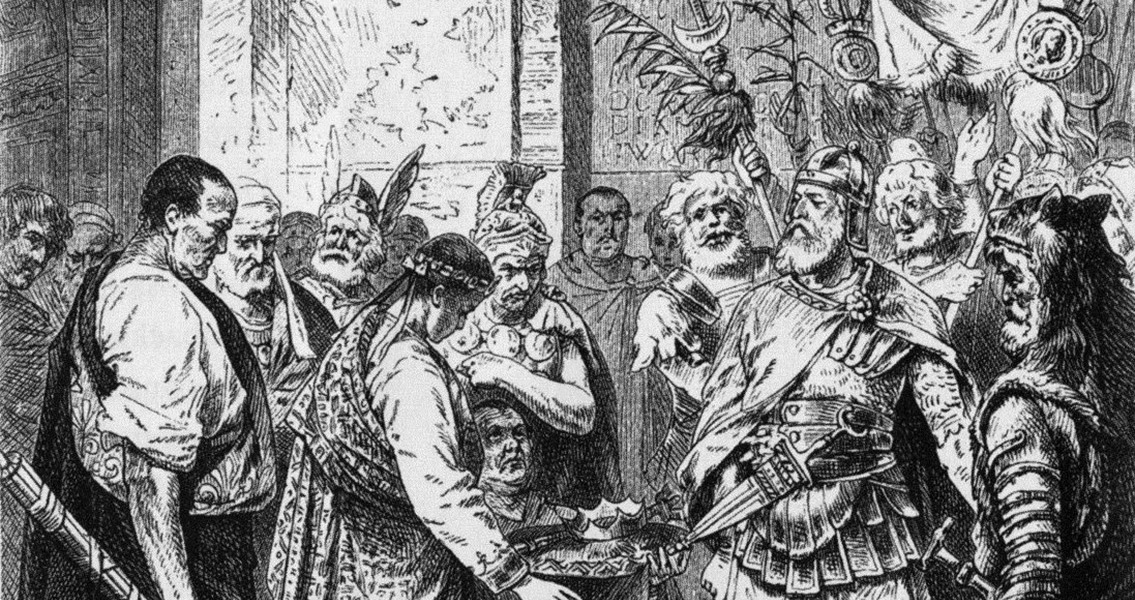<![CDATA[Although its real significance in the Fall of the Roman Empire is still debated, on 4th September, 476 CE, the last emperor of the Western Roman Empire, Romulus Augustus, was deposed. The historiography of the fall of the Roman Empire is far from unified when it comes to determining a specific event which can be pointed to as the moment the empire fell. Edward Gibbon, author of the hugely influential 'The History of the Decline and Fall of the Roman Empire', took the 4th September, 476 CE, as the marker for the Empire's dissolution as it signaled the moment a barbarian king took the title 'King of Italy', seemingly replacing the position of Western Roman Emperor. Although this is a popular idea, many historians argue against it, either pointing to the survival of the Byzantine Empire for hundreds of years as a continuation of Rome, or arguing that in reality the Western Roman Empire's significance had evaporated long before 476. Romulus Augustus had taken the throne in 475 CE, installed by his father Orestes after he'd launched a coup 'etat against the unpopular Emperor Julius Nepos. Feeling his son would be a more popular choice of emperor than himself, Orestes had him crowned in 475. In an ominous start for the young emperor, the leaders of the Eastern Roman empire refused to recognise Romulus Augustus - a man they considered a usurper - and instead continued to support the exiled Nepos. Odoacer, the Germanic chieftain who deposed Romulus Augustus, was born sometime around 433 CE and was likely a member of the Sciri tribe. At some point the Sciri entered what is now Italy and Odoacer enrolled in the Roman army, eventually reaching a position of command. Following the overthrow of Julius Nepos, Odoacer led his men in a revolt against Orestes, who had reneged on a deal to give Odoacer's tribesmen land in Italy in exchange for their support in the revolt. Just as Romulus Augustus had taken the thrown through his father's support, he ultimately lost it through an enemy his father had made. Orestes was defeated and killed at the battle of Piaenza, depriving the emperor of his father's military protection. On 4th September Odoacer's troops reached Ravenna (the capital of the Western Roman Empire since 402), deposed Romulus Augustus and proclaimed Odoacer King of Italy. The new king, who was designated a patrician by Zeno, the Eastern Emperor, did his best to respect the authority of the eastern Roman administration, although he refused to agree to Zeno's desire to have Nepos reinstated as western emperor. Romulus Augustus' deposition in 476 was the culmination of years of unrest and instability in the Roman Empire, a complex series of events which historians still struggle to prioritise and sequence. Although internal troubles such as financial crisis and the instability caused by the rise of Christianity were crucial factors, the encroachment of 'barbarian' groups such as the Goths and Visigoths was just as significant. For centuries Rome fought with tribes on its borders, but by the fourth century CE these barbarian tribes had actually started to break into the empire. The sack of Rome by the Visigoths in 410 reflected just how vulnerable Rome had become. Augustus Romulus' deposition in 476 can be seen as the point where internal and external problems combined to bring the Western Empire to a close. ]]>
Romulus Augustus Deposed by Odoacer
